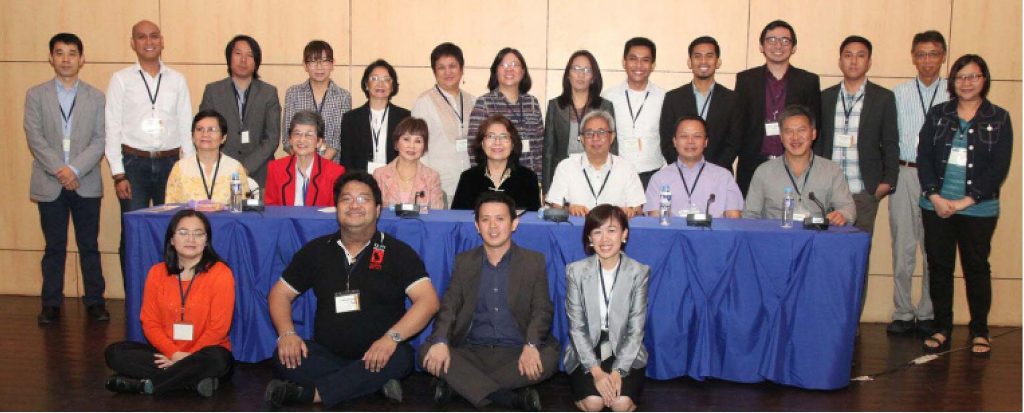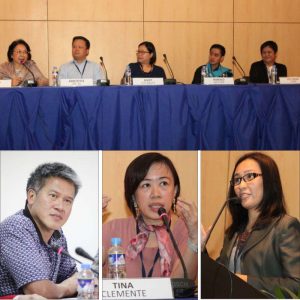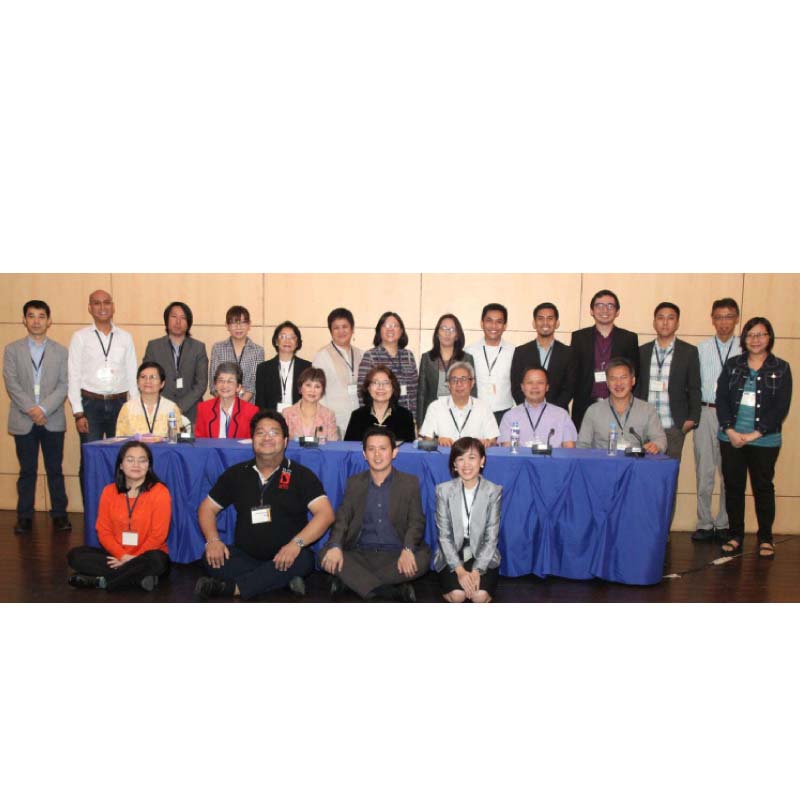

Research on the Chinese in the Philippines is a rich and still quite unmined field. Last Jan. 15-16, Ricardo Leong Center for Chinese Studies and Kaisa Para Sa Kaunlaran Inc. convened a two-day conference on the “Chinese in the Philippines: New Studies, Current Issues, Future Directions.”
The audience was limited mainly to academics and people interested in ethnic Chinese studies. The conference was productive, with presenters interacting with participants who raised questions and participated enthusiastically in the discussions.
Panels were divided into topics on the Chinese in local and national history, surveys on new immigrants, identities and new images, Chinese studies and oral history, and more contemporary issues like education and language, faith and religion, image and literature. The conference was capped by a roundtable discussion on new directions and future research.
It was a fitting activity at the start of the Gregorian new year: to usher in the Lunar new year, and the launching of Kaisa Para Sa Kaunlaran’s series of activities for its 30th anniversary.
Regional studies
Panel 1 on Regional Studies was moderated by Lucio Pitlo III. The three speakers in the first panel were Dr. Richard Chu’s graduate students from the University of Massachusetts. The papers gave us a glimpse of the Chinese in Negros, Zamboanga and Sorsogon.
Alfie Neodama discussed “The Chinese in the Economy of Negros Occidental: Clues from the Contribucion Industrial, 1890-1898.” Data gathered by Neodama confirmed earlier conclusions that the early Chinese sojourners did not want to go into agriculture, as it necessitated their having to establish roots in their localities. The Contribucion Industrial in 1894 showed that Chinese owned- and operated-businesses were those that could easily be liquidated and transported and their entrepreneurial roles minimal. Hence, it was not surprising that there was only one Chinese out of 60 tax-registered sugar-manufacturing land estates.
Ma. Christina Cayones, in her paper “El Chino, Un Amigo: Mapping and Locating the Chinese in Zamboanga, 1850-1900,” described the conditions that accounted for the friendlier or better treatment of the Chinese by Spanish authorities. She presented the varied roles played by the Chinese in the urban genesis of Zamboanga as the Spanish authorities created and managed what was considered a frontier settlement in Mindanao. They adopted coping mechanisms when faced with harsh realities like failed investments, poor harvests, and unfriendly business climate. Her observation that the Chinese in Zamboanga did not all enjoy business success that led to economic prominence affirms earlier studies that the Chinese were not innately possessed of business acumen.
Javier Leonardo Rugeria examined the profile and participation of the Chinese in the growth of the Manila hemp (abaca) industry in his paper “Tracing the Sangley Trails: The Chinese in the Socio-Economic Transformation of Albay and Sorsogon, 1850-1897.” The prosperity and socio-economic growth of the province was closely tied with the development of the abaca industry, especially at a time when the Philippines was opened to world trade. The Chinese played a vital role in filling the demands for hemp extensively used in the worldwide shipping industry. This in turn led to economic prosperity among the Chinese mestizo families. It was not an accident that the Bicol region, with its successful Chinese mestizo families, was unique in sending a great number of its sons back to China to get much needed Chinese-language education.
Education
The problem of deteriorating instruction in Chinese-language schools and the fact that graduates of such schools often end up mediocre even after six years of Chinese education continues to be a pressing concern in the Tsinoy community. Speakers in Panel 2 (Education), moderated by Dr. Elizabeth Urgel, gave their input on the problems and suggested some reform measures to address the problems.
Dr. Ellen Palanca of Ateneo de Manila’s Confucius Institute talked about “Addressing the Problem of Chinese Language Teachers in the Philippines” while Franco Addun of Xavier School discussed “The Role of the Chinese Schools in the Integration of the Chinese in the Philippines: 1947 to 1975.”
Boanerge Tan of Sun Yat Sen School in Iloilo was supposed to present a paper on “Implementing Reforms in Chinese-Language Education: An exploratory study of approaches in the 1990’s up to the present,” but was unable to make it due to a family emergency.
Dr. Sining Marcos, assistant principal of Philippine Cultural High School, graciously filled in the gap and delivered a paper on “Shifting Paradigm: Reforming Chinese Language Education in the Philippines – sharing the experience of Philippine Cultural College.” The Confucius Institute has been trying to train homegrown teachers to augment the severe lack of teachers. Philippine Cultural College has pioneered innovative measures that seem to be quite effective in improving students’ Chinese ability.
The paper on integration left questions such as the opposite effect of many traditional Chinese schools in hindering the process of integration and raising a generation of children with confused identities with regard to their host country and their motherland (read: Taiwan at that time).
Identities
The evolution of the Tsinoys from itinerant traders and sojourners to Tsinong Pinoy is a consequence of natural historical and social processes. Panel 3 (Identities), with Rommel Banlaoi as moderator, included the papers on “From Sangley and Instik to Huaren and Tsinoy – Ethnic Identity Formation and Transformation” by Teresita Ang See, Ivy Ganadillo’s “A South-South Migration: Narratives of Selected New Chinese Migrants in the Philippines,” and Dr. Dai Fan’s “Image of the Chinese Filipinos in the Eyes of Filipinos: Change and Problems.”
Ang See discussed the changes as reflected in her 1995 and then 2015 surveys on Tsinoy identity. Questions such as where the Tsinoys stand when it comes to the ongoing dispute with China, whether Tsinoys should actively participate in politics and be proactive in issues that concern them were explored.
Why do Chinese migrants choose the Philippines as their destination, what are the rewards and challenges of living in the Philippines, are among Ganadillo’s findings from her interview and survey of new migrants. It gives a more balanced understanding of the situation of new Chinese migrants in the country.
Dai Fan of Jinan University in Guangzhou conducted a survey of Filipino students to find out their perception about the Tsinoys. His findings showed a disturbing phenomenon that even in the 21st century, perception of the Tsinoys in Philippine society still leans towards the negative continuum.
Historical studies
Four insightful papers in Panel 4 (Historical Studies) gave fresh knowledge about some lesser-known aspects on the history of the Chinese in the Philippines.
Carmelea Ang See discussed ancient maps and ancient Chinese historical records that mentioned islands in the Philippines, long before our country came to be named after King Philip of Spain. She presented new information about the Selden Map of China rediscovered at the Bodleian Library of Oxford University in 2008. The maps and records are significant documents that showed our active trading networks with neighboring countries before the Spaniards set foot on our islands.
The troubled inter-ethnic relations and tensions between colonial authorities and the Chinese who break the law demonstrate the dynamic interaction between the colonial authorities and the ordinary Chinese – those who commit “unspeakable sin” and the vagrants or vagabonds.
Joaine Jan Marquez’s “Pecado Nefando and the Sangley: A Historical Investigation on Inter-ethnic Relations and Social Control in Early Spanish Philippines” and Jely Galang’s “Chinese Vagrants in the Late-Nineteenth Century Manila” give a glimpse into ethnic and class dimensions of criminality in the Philippines during the late-nineteenth century.
The lives of ordinary Chinese who commit sodomy and those who avoid tax payments and other authoritarian disciplines by being vagrants showcase the policy and practice of Spanish authorities in imposing social controls in the colony.
Dr. Richard Chu, a professor at the University of Massachusetts at Amherst, recounted stories of lesser known historical actors such as the Chinese laborers, the pure-blooded Chinese general Jose Ignacio Paua and the American judges in the courts of Manila in his paper on “The General, the Laborer and the Judge: Recounting the Lives of the Chinese and of those around them during the Early American Colonial Period.”
Chinese studies and oral history project
Day two of the conference focused on Chinese Studies and Oral History Project in Panel 5 moderated by Bernard Karganilla. Taiwan professor Dr. Shih Chi-yu’s paper “Post-Chineseness of China/Chinese Studies in the Philippines: Away from Binondo?” gave valuable insights on the impossible task of defining China or Chineseness and the complex behavioral, political and other social processes involved in grasping the contexts and policy implications of such processes.
In the Tsinoy community, post-Chineseness as a role-identity, particularly away from the traditional boundaries of Binondo, can lead to different trajectories and various meanings. Dr. Tina Clemente’s “China Studies in the Philippines: Oral History Research” discussed the oral history project on senior experts on Chinese studies in the Philippines, which she conducted with a team of researchers.
The interviews with experts in the fields of foreign relations, literature, media, and development contributed to the Philippine narrative and academic literature and the discourses in Chinese studies and Philippines-China relations.
Yoko Asato’s “Identification Process and Chineseness: In Comparison with Peranakans in Singapore and Tsinoys in the Philippines” is a revelation.
The Japanese scholar compared the Peranakans in Singapore and Tsinoys in the Philippines through the periodical magazines published by The Peranakan Association Singapore and the Tulay Chinese-Filipino digest published by Kaisa Para Sa Kaunlaran. The author discerned the rootedness of the Tsinoys while in Singapore the Peranakan Chinese and non-Peranakan Chinese are clearly delineated through their emphasis on “their glorious sophisticated culture and lifestyles.”
Dr. Shirley Lua expounded on “Recreating the World in 21st Century Filipino-Chinese Speculative Fiction.” An increasing number of Chinese-Filipino writers have engaged in different fiction genres including fantasy, horror, magic realism, superhero, and science fiction. The paper discussed how these writers manipulate the genre conventions to create their own brand of speculative fiction, and how the ethnicity factor or Chinese-Filipino consciousness influenced such work.
Faith, religion and literature
Panel 6, moderated by Dr. Theresa Cariño, focused on faith, religion and literature. Fr. Aristotle Dy and Dr. Juliet Uytanlet tackled religious syncretism and “hybridity” as practiced by Tsinoys, the first on the aspect of Catholicism and the second on Protestant faith. Dy’s “Syncretism as Identity: Catholicism and Chinese religions in the Philippines” and Uytanlet’s “Hybridity in the Religious Sphere: Discovering the Perceptions of the Hybrid Tsinoys on Faith and Religion” both discuss instances of syncretic or hybrid practices of faith and religions as part of Chinese identity.
Dy emphasized the need to not make theological judgment but to understand syncretism as a cultural practice. He also gave an interesting glimpse of other forms of Chinese “religions” and “deities.” Uytanlet points out how the mixing of blood and culture impact religions practices.
The last two papers on literature tackled the works of two authors, Debbie Ann Tan and Charlson Ong. Ronald Baytan’s “Woman, Myth and ‘Chineseness:’ Notes on Debbie Ann L. Tan’s Tsinoy Plays” explores the identity politics in Tan’s plays, especially how the Chinese-Filipino woman is re-imagined in between the realm of myth and virtual reality as well as within the shifting significance of “Chineseness” in the country.
Lily Rose Tope’s “Chinatown as Dystopia in Charlson Ong’s Blue Angel, White Shadow” discusses how Binondo, the Chinese immigrant’s sanctuary, turns ominous and deadly in Charlson Ong’s detective novel. It explores the ethnic anxieties that sprout from a Binondo that has become more vulnerable to the unwanted socio-political osmosis from the Filipino world.
Cariño remarked that it is good to have included religion, literature and drama in the conference, which is often absent, as it is here that tensions are revealed. She noted the absence of papers on women. For example, how does religion contribute to the marginalization of women?
The success of the conference owes much to the planning committee and staff as well as logistics and funding from the Leong Center for Chinese Studies, Ateneo de Manila School of Social Sciences, Five Colleges of the University of Massachusetts and Liwayway Marketing Corporation and Kaisa Para Sa Kaunlaran.
